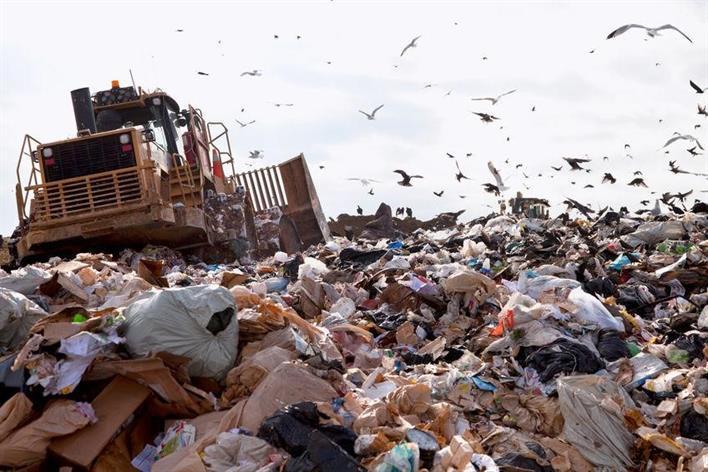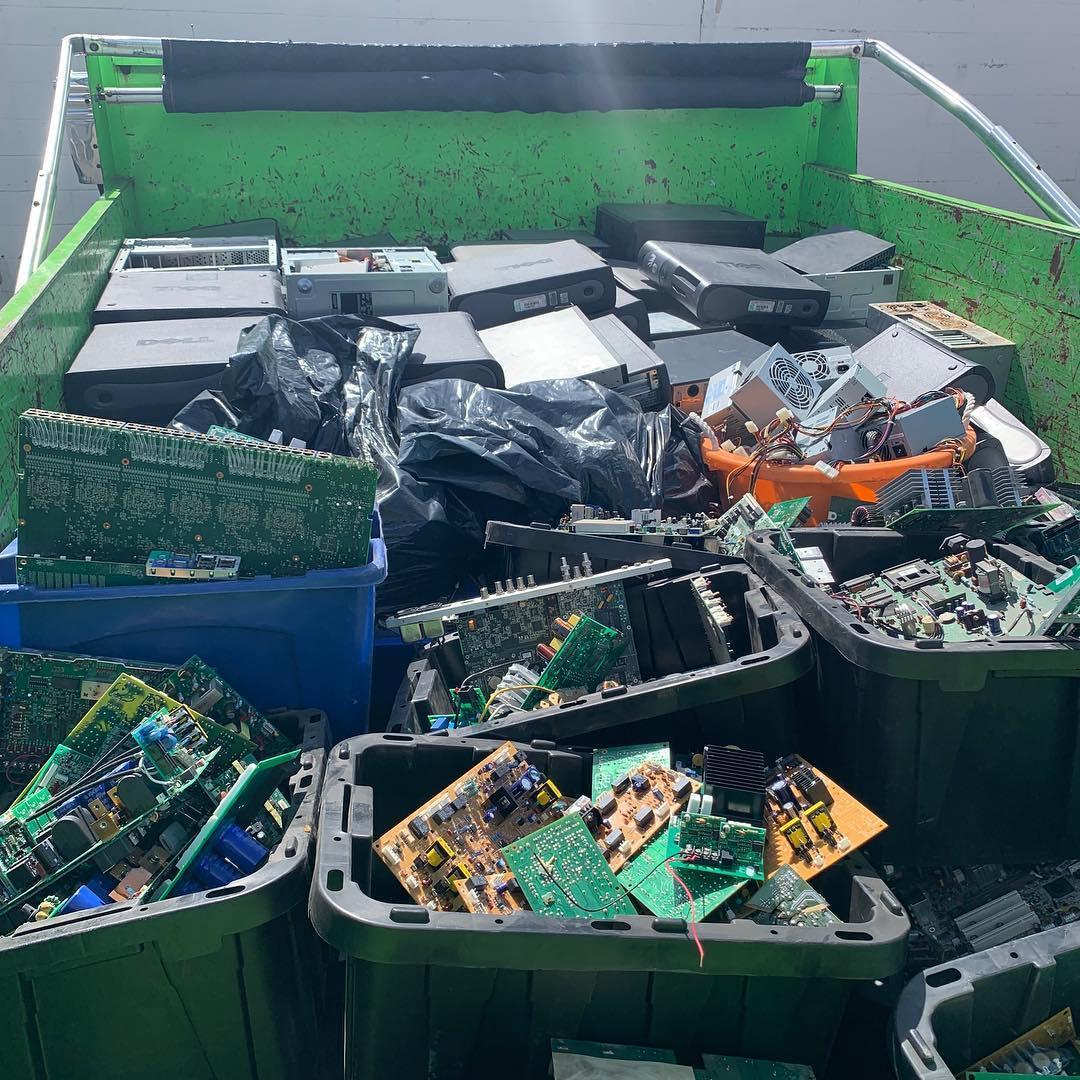Everything You Need To Know About Landfills (Updated March 2022)
Updated March 2022 | Chapter 2 of 7

We’re creating more and more junk, but we’re running out of places to put it.
As society advanced, we manufactured more and more products designed to make our lives easier. But this also created more junk, and that junk needed a new home. As a result, the landfill was born as a final resting place for everyone’s discarded junk.
Landfills aren’t a modern creation. We’ve been dealing with junk since the early days of civilization. Let’s dive into a brief history of landfills, how people use and maintain them, and why they can't hold everyone’s junk.
The History of Landfills
Landfills are a neat way to hide a dirty problem.
- Greece, 500 B.C. – First Landfill. The first recorded landfill belonged to the Greeks, dating back to 500 B.C. A law had been passed that no one was allowed to throw junk into the streets. Instead, citizens would send all their junk at least a mile away from Athens. This simple solution would prevent infectious diseases and bad smells from affecting city life.
- Virginia, 1710 – Holes to Bury Junk.
As people spread and civilization grew, there was a need for better junk removal tactics. Colonists in 1710 Virginia dug holes to bury all their junk, including discarded armor. But the colonies weren’t hit the hardest by junk — it was the growing cities that found their junk burdensome.
- London, 18th Century – "Zero Waste" Policy. Metropolitan areas also found better ways to dispose of their junk. London had the first waste collection service in the 18th century. They collected coal ash and repurposed it into bricks. It was the first instance of a "zero waste" policy.
- New York City, 1866 – The War On Garbage. As modern city life grew, people got sloppy. Cities neglected the need for efficient junk removal services at a time when people were creating more junk than ever before. City dwellers simply tossed their junk into the street as they needed to. New Yorkers started dumping into the East River, creating contaminated water that spread diseases like cholera and dysentery. It led to New York City's Metropolitan Board of Health declaring a war on garbage in 1866.
- Nottingham, UK, 1874 – The First Incinerator. In 1874, the first incinerator was created in Nottingham, UK. It wasn’t until 1885 that America built the nation's first garbage incinerator on Governors Island, New York. But this wasn’t the end of the junk problem.
Junk continued to accumulate for many years. In 1894, there were barges full of garbage floating down the Potomac River. New York City was still dumping garbage into the Atlantic as late as 1933. Shortly thereafter, George Roby Dempster introduced the Dempster Dumpster in 1936 to help with junk. But true junk removal took a long time to really catch on.
We create more products as society consumes more stuff, which means more junk. That’s because many people don’t donate or recycle, which has resulted in a need for more landfills.
How does a landfill work?
Landfills are the most common tool we have to deal with junk disposal. Read on to learn how landfills work!
- Junk gets dropped off.
- Machinery compacts the junk daily.
- Landfill workers add a layer of soil or tarps over the top to prevent it from spreading.
- The junk and waste decompose over time, depending on the materials they’re made of. Many of the items we throw away aren’t biodegradable and will be in the landfill for several lifetimes.
- Once a landfill is full, workers add an approved cover over the top. This is usually a combination of soil, clay, and a synthetic liner.
- Crews monitor the landfill for 30 years until it is safe for reuse.
Many people eventually realized that landfills aren’t good for the environment. Burying junk in the ground and covering it over with dirt doesn't make these things go away. Many of the items that they threw away also weren’t biodegradable and as a result, had a negative impact on the environment.
Landfills finally cleaned up their act.
If landfills were going to continue business as usual, they had new priorities to consider, including:
- Proximity to water
- Local ecosystems and habitats
- Traffic
- Neighborhoods and communities
Today’s landfills take the environment into consideration through construction methods. Current landfills are constructed in many layers to reduce their environmental impact.
What Does a Closed Landfill Look Like?
When a landfill is full, the cross-section will look like this, from bottom to top:
- Clay: a compact layer that acts as a foundation and barrier. It prevents gas and leachate, a mixture of landfill secretion and water, from getting into the surrounding soil. It’s a byproduct of most landfills and can be hazardous if it seeps out.
- Geomembrane: a plastic liner that traps odors and excess gas created by the landfill. It also limits the amount of water that enters the landfill. This prevents the production of leachate.
- Drainage collection system: an underground system of pipes with holes, surrounded by gravel. This pipe system collects the leachate, pumping it to a waste management facility.
- Collection layer: sand, gravel, or a thick mesh separates the solids from the leachate. This layer acts as a filter before the leachate gets to the drainage system.
- Waste: this gets compacted daily, and workers add a final layer of soil on top of the junk.
- More clay: used to compact the junk below it and to keep moisture out.
- Mesh cover: this plastic layer prevents extra moisture from seeping in. It also prevents odors and gases from leaking out.
- Soil: used over the top to supplement vegetation. It also adds an extra layer for moisture control.
- Methane gas pipes: compacted junk creates methane gas over time. This gas can be lethal (and even explosive) if not carefully monitored. All current landfills have pipes that either expel the gas or turn it into energy.
These new designs for landfills are far more environmentally conscious than their predecessors. But landfills still create problems, no matter how carefully constructed they are.
Landfills are not the most environmentally friendly way to dispose of junk.
Although landfills have come a long way from the days of the Greeks, they still have many downsides. These are the biggest problems caused by landfills:
- Greenhouse gases: landfills produce gases composed of roughly 50 percent carbon dioxide and 50 percent methane. Both of these contribute to the breakdown of the ozone layer.
- Groundwater contamination: new landfill construction methods try to keep leachate from affecting groundwater. But their protective layers aren’t enough. Metals and chemicals still seep into the surrounding soil and contaminate groundwater.
- Wildlife disruption: as more land gets used up for landfills, it encroaches on surrounding habitats. Animals will seek (likely contaminated) food and water in these landfills leading to their sickness or death.
There are better options than landfills. We don’t have to rely on them as the end-all option for our junk. Here are some alternatives to throwing away your junk and contributing to the landfill problem:
- Donate. Many local charities and donation centers will take almost any item that’s in good shape. Check out Goodwill, The Salvation Army, and local homeless shelters. Also, consider partnering with larger companies that act sustainably. For instance, we recently partnered up with Casper Mattress and Habitat for Humanity in NYC to help with mattress donating, recycling, and reselling.
- Resell. Craigslist, OfferUp, and Facebook Marketplace are online services for selling unwanted items. It’s better to give something a new home than to fill up the landfill. There’s also a feeling of social good tied to selling an item as opposed to discarding it.
- Recycle. Beyond paper, plastic, and glass, there are many different types of items to recycle. You can bring e-waste (like computers and cell phones) to recycling centers or local drives in your community. You can also recycle more practical materials (like shelving and metal) at special facilities or drop-off centers.
- Upcycle or repurpose. There are hundreds of different ways to reuse some of the most common items we throw away. Use toilet paper rolls to organize cords, make a lamp out of wine bottles, use plastic containers as pots for growing plants. You can also bring new life to old furniture by refinishing it to give it a whole new look. We’ve accomplished this with our Remix Market store, a refinishing shop established for the purpose of upcycling furniture and other household items.

The Junkluggers eliminates the need for landfills with their expert junk removal services.
These options require extra time, care, and effort, but they’re safer and more eco-friendly than taking the easy way out and dumping in a landfill. It’s tougher to recycle and repurpose, but the benefits outweigh the time, effort, and cost on our part. China’s ban on most recyclables has made it even tougher, but we’re sticking to our goal of achieving a more eco-friendly future for junk removal.
If everyone embraces donating, recycling, and repurposing, we can reduce the need for landfills. Only then will we find new homes for items and reduce our junk output.
In the next chapter, we’ll cover what happens to different types of materials in a landfill and the way these items affect the environment.
Plus, check out our other blogs to learn more about waste management, sustainable junk removal, and so much more!
- Chapter 1: The Typical Junk Journey
- Chapter 3: 26 Household Items That Don't Disintegrate In Landfills
- Chapter 4: 40 Statistics About Waste Management That Will Blow Your Mind | March 2022
- Chapter 5: The Sustainable Junk Journey
- Chapter 6: 21 Household Items You Should Be Recycling (& Probably Aren't)
- Chapter 7: 5 Reasons You Should Care Where Junk Goes
